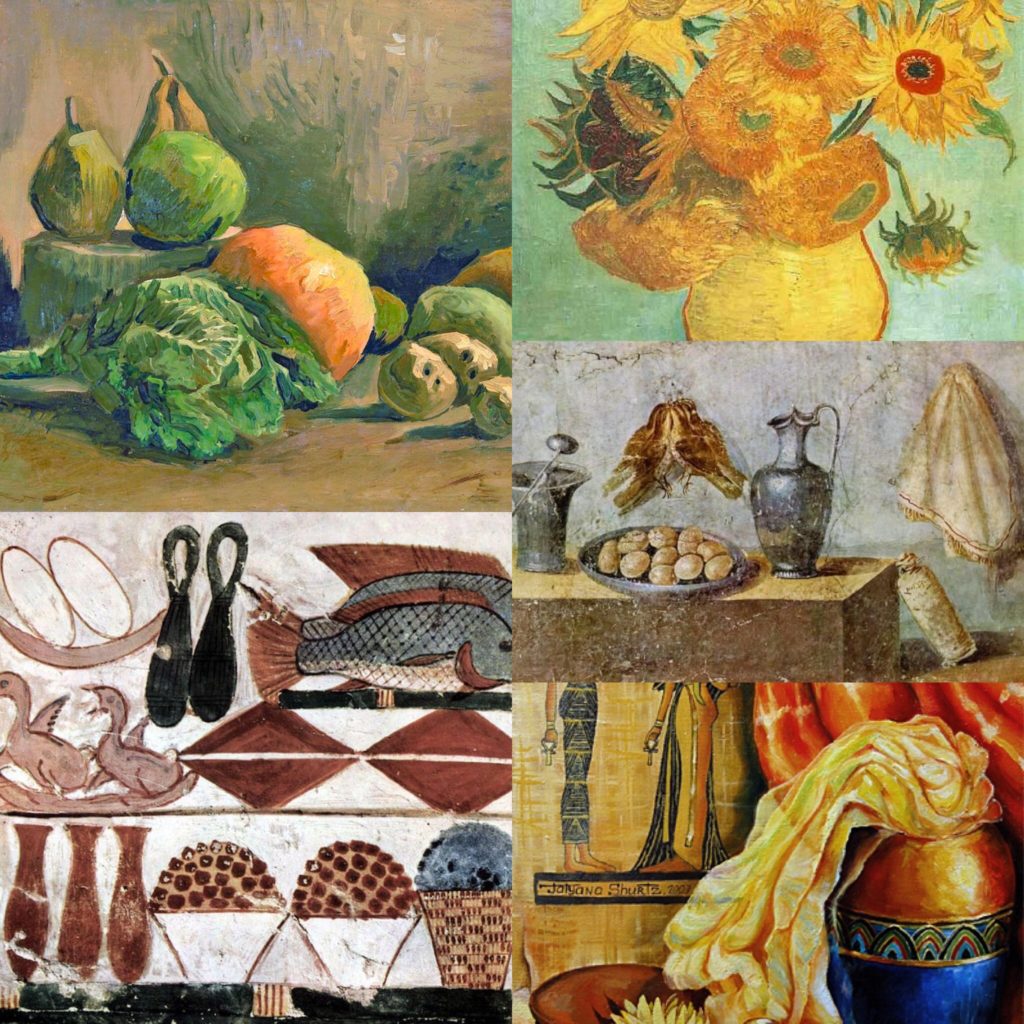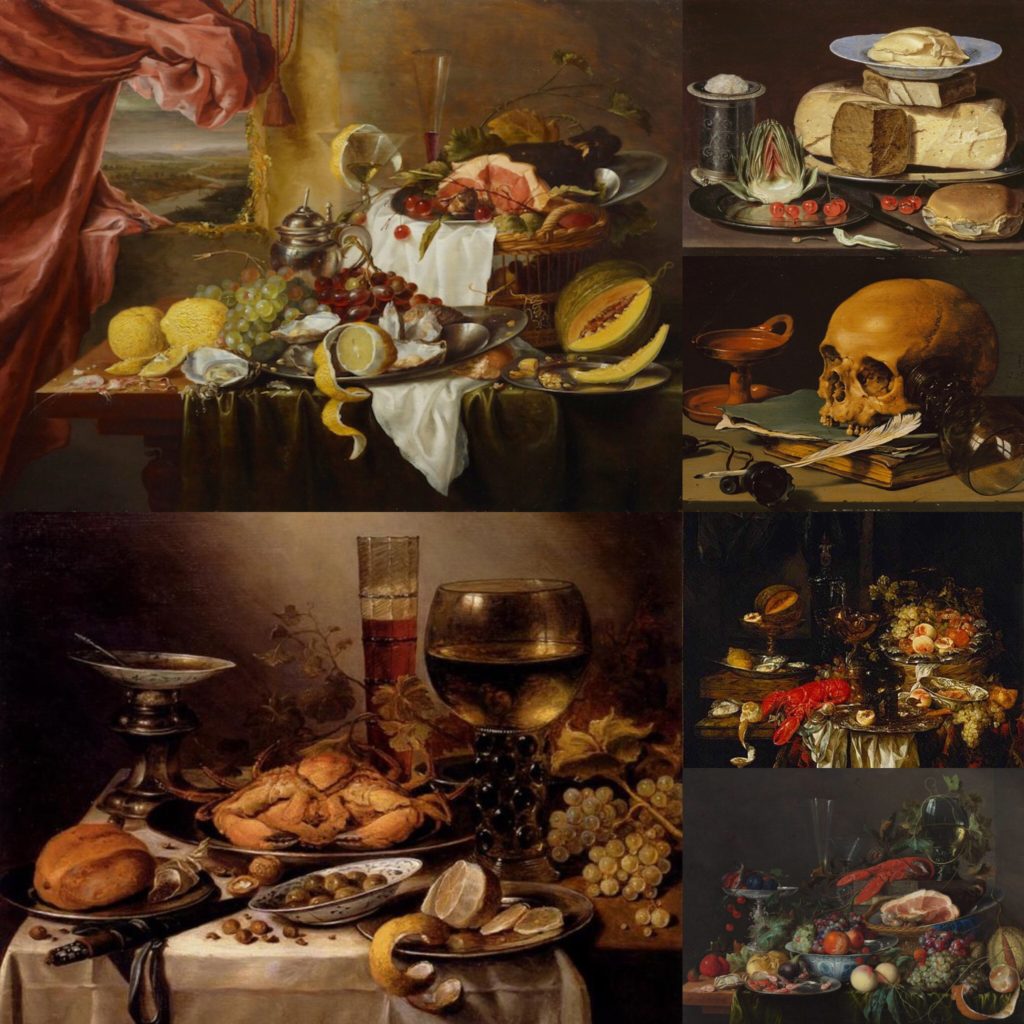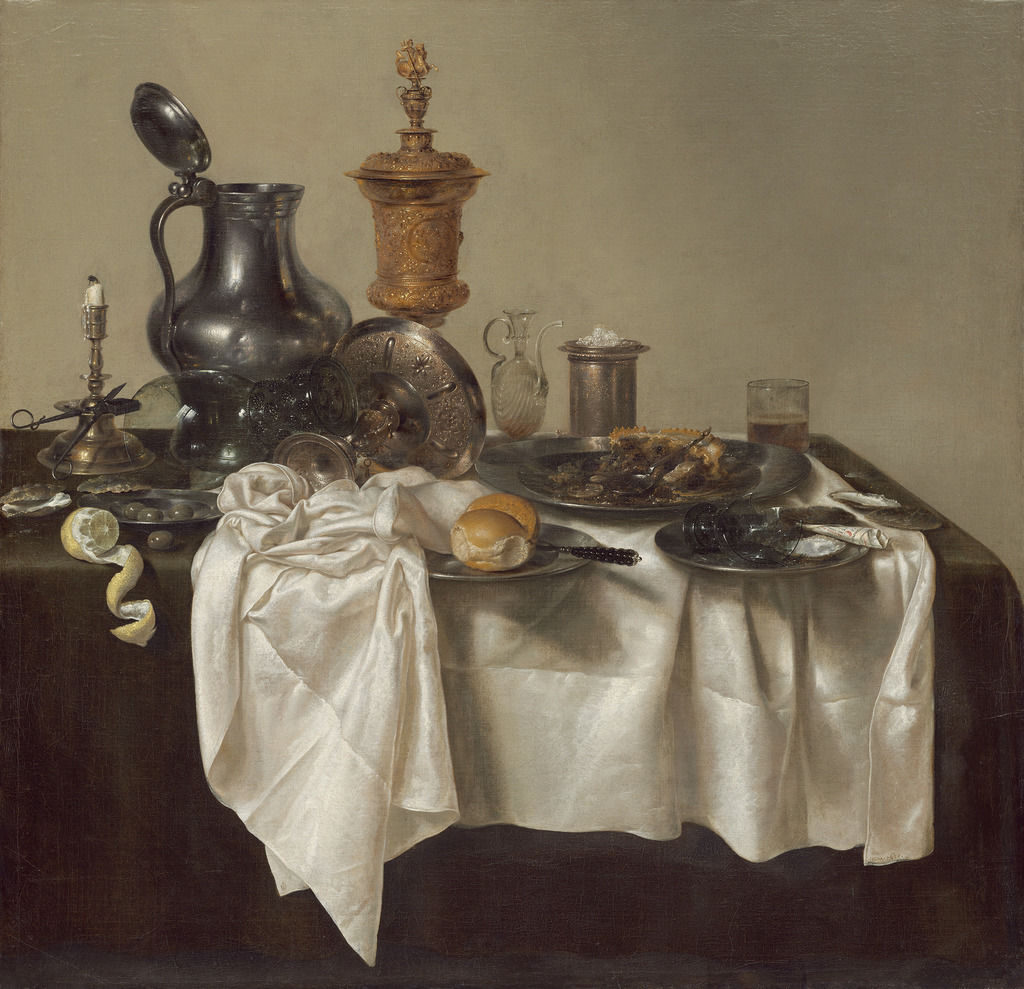A still life is a painting of a range of inanimate objects. This became very popular in the 16th century in the Netherlands where it was called “stilleven”, however this form of art can be seen all the way back in ancient times.

History
Still life paintings were seen in as early as the 15 century during the Egyptian times where paintings of different foods such as meat, fish and crops were discovered in ancient burial sights. The Romans and the Greeks also made similar forms of art using a technique called Frescoes which is where they painted on plaster. In the middle ages this form of art was modified to include more religious elements. In the Renascence era, floral designs became more popular. Paintings from this time usually show a vast amount of flowers from different areas around the world all blooming in the same vase. During the Dutch golden era, this was adapted slightly to create painting known as Vanitas which are floral painting that were paired together with objects like human skulls and hour glasses to convey the concept of the nature of life. Closer to the modern day era, this technique was adopted by artists such as Van Gough who painted lots of images of objects such as sunflowers, water jugs and wine bottles.
Dutch still life

Dutch still life painting are known for depicting objects such as fruit, flowers and meat. When looking deeply into these painting we are able to focus on underlying metaphors. This era was known for its wealth. This was a time where overseas trading was prominent in the Netherlands and exotic luxuries from all over the world were imported into the country. Luxuries included things such as tobacco, spices, salt, gems, tea, silk and sugar. Dutch citizens wanted to celebrate their new found imports by incorporating them into their art. From this point on, these paintings became more elaborate and affluent.
Cherries and strawberries were used to represent men’s souls and dragonflies were used to show evil since it was seen as a subspecies to butterflies which represent salvation. Skulls and hourglasses were also very common in dutch still life paintings as a warning, and were often seen next to luxury goods as a reminder that such things would not be important in the after life.
Analysing Still life paintings

Banquet Piece with Mince Pie, 1635
by Willem Claesz Heda
In this painting we can see an abundance of goods and luxuries. The gold and silver jugs on the table shows a high status and symbolises riches, it also pops against the background. The tablecloth also reflects power as it seems to be a type of quite expensive cloth, perhaps silk. On the table we can see all sorts of foods from lemon imported from Mediterranean countries, to mince pie that was seasoned with spices from eastern countries. These imported goods show a high social status and an abundance of wealth.

An Allegory of the Vanities of Human Life, c. 1640
by Harmen Steenwyck
In contrast to the image above this painting is slightly different as it is more religious in symbolism. Firstly, it is clear to see that it is a lot more monotone, and a lack of light shining which shows that the concept is darker or more serious. All the objects on the table are displayed in a chaotic order which could represent sadness or anger, and implies that someone may have been present at the scene and then left. We can also see that although the image contains some objects, there is quite a lot of bare space. This represents a feeling of emptiness that comes with having luxuries. The painting also refers to death as there is a very prominent skull on the table, that the steak of light is shining on to to highlight it further. The presence of books and instruments is used to indicate knowledge. Having the skull in front of the objects shows that when death comes luxuries will not mean anything.
https://www.artsy.net/article/artsy-editorial-dutch-lifes-dark-secrets-hide-exotic-delicacies
